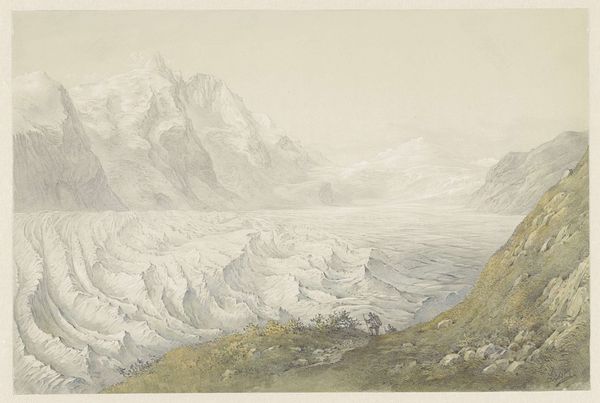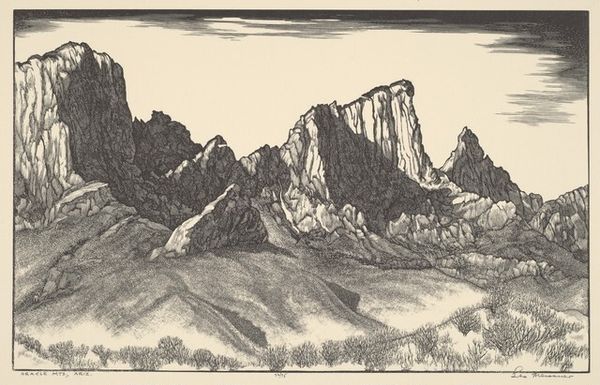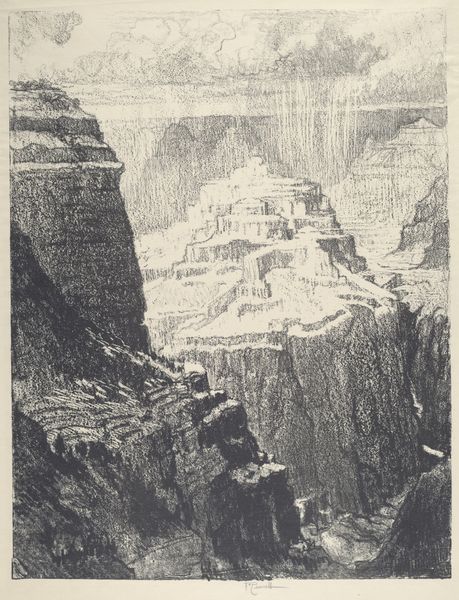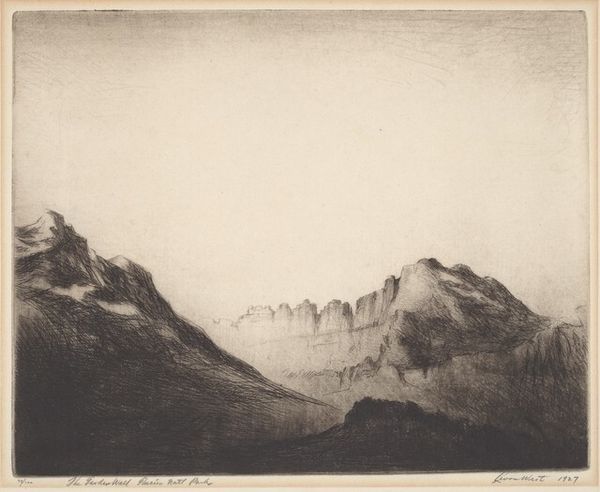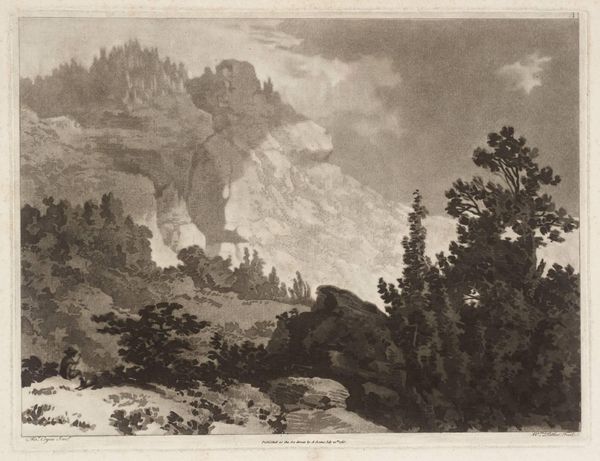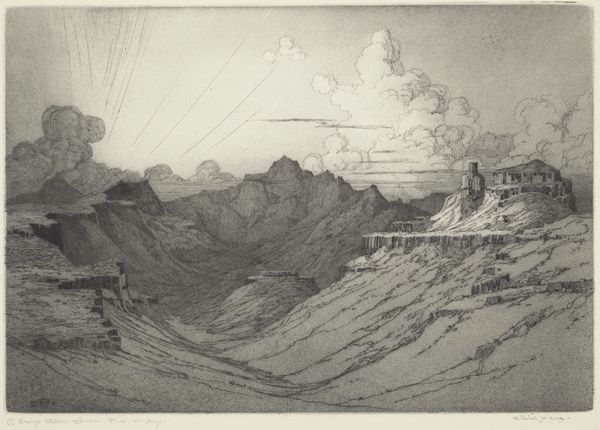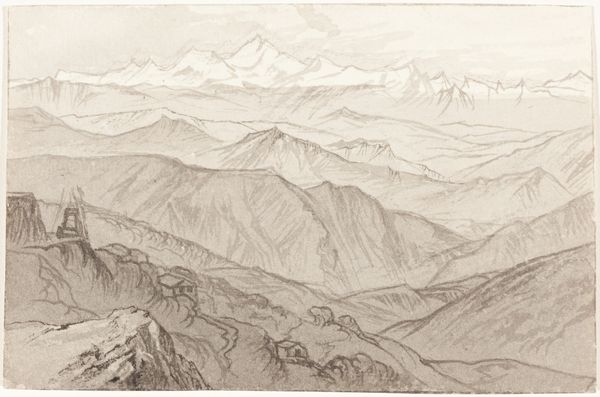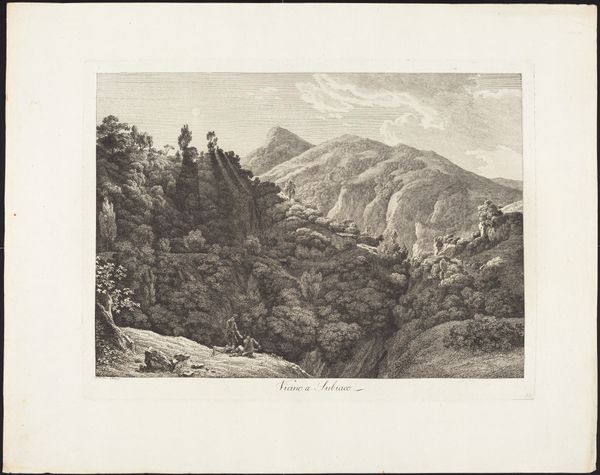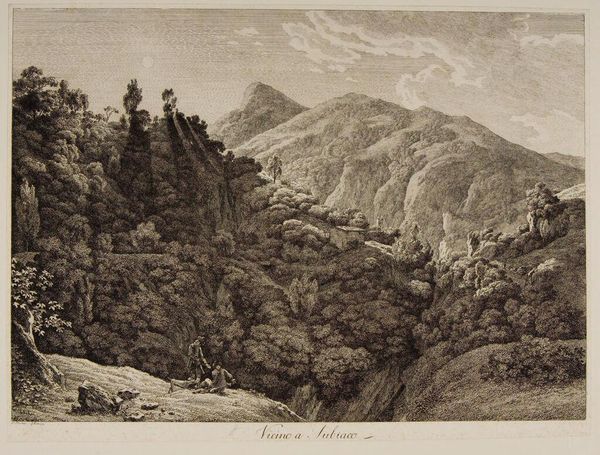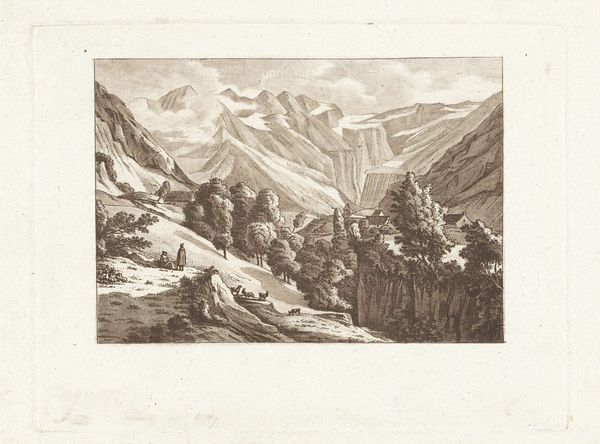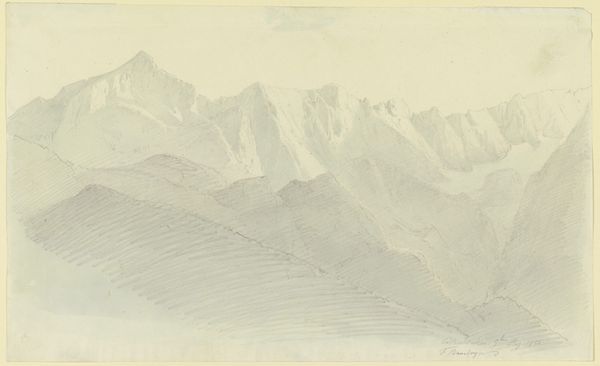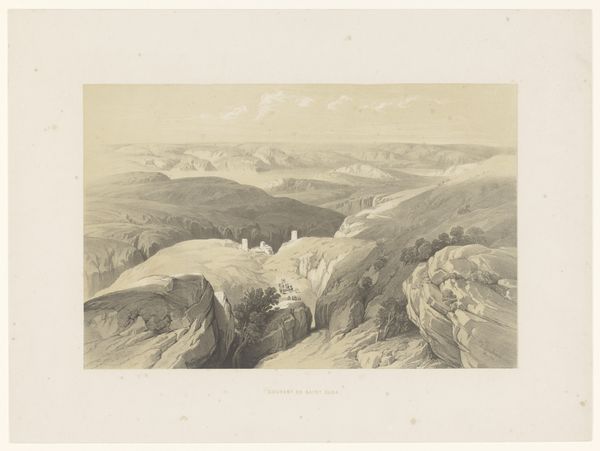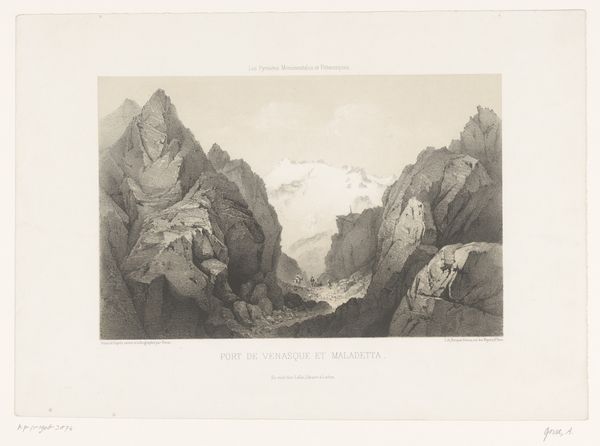
drawing, print, pencil, graphite
#
drawing
# print
#
landscape
#
pencil drawing
#
pencil
#
graphite
#
realism
Dimensions: plate: 26.83 × 34.93 cm (10 9/16 × 13 3/4 in.) sheet: 39.37 × 48.1 cm (15 1/2 × 18 15/16 in.)
Copyright: National Gallery of Art: CC0 1.0
Curator: Harold Lukens Doolittle created this lithograph, entitled "Canyon Crests," sometime in the 1940s or 50s. Editor: It's imposing. The play of light and shadow evokes something primordial, like peering into the earth's raw beginnings. It feels both powerful and still. Curator: Interesting. It speaks to the grand Western landscape tradition, a visual vocabulary shaped, in part, by the railroads that were built, offering new, majestic vistas and shaping tourism—selling a specific kind of experience. Editor: I see what you mean. The vastness is undeniably present, but so is a feeling of human insignificance against these timeless forms. The striated cliffs feel like echoes, reminding us that every moment leaves a mark. The vertical lines draw your eyes heavenward, but the horizontal planes create a sense of deep, geological time. Curator: I'd argue that landscapes like this became entwined with ideas about American exceptionalism during this period. Look at the formal qualities, though—the carefully controlled graphite strokes. I wonder if he aimed to present it more sublime rather than literal. Editor: Yes, Doolittle emphasizes shadow, rendering a semi-abstracted space with distinct spiritual weight. These cliffs and spires are the stage for nature's quiet drama, etched in gradations from silver to black, suggesting unseen depths. It feels less about a geographical place and more about our place within the system of the earth. Curator: It is undeniable that many lithographs such as this were marketed to those searching for the promise of the West. It’s a subtle detail that carries cultural and historical weight, revealing how images and symbols operate within power structures, shaping meaning. Editor: All this talk about marketing feels too limited for me, though. These canyons exist outside human construct, outside historical eras. It has less to do with America, maybe everything to do with humanity's role within a massive space outside its grasp. Curator: Point taken. Even art entangled with power or national symbolism holds individual, multifaceted meanings. Editor: It is good to be reminded that images work with power and emotion in different ways at once.
Comments
No comments
Be the first to comment and join the conversation on the ultimate creative platform.
